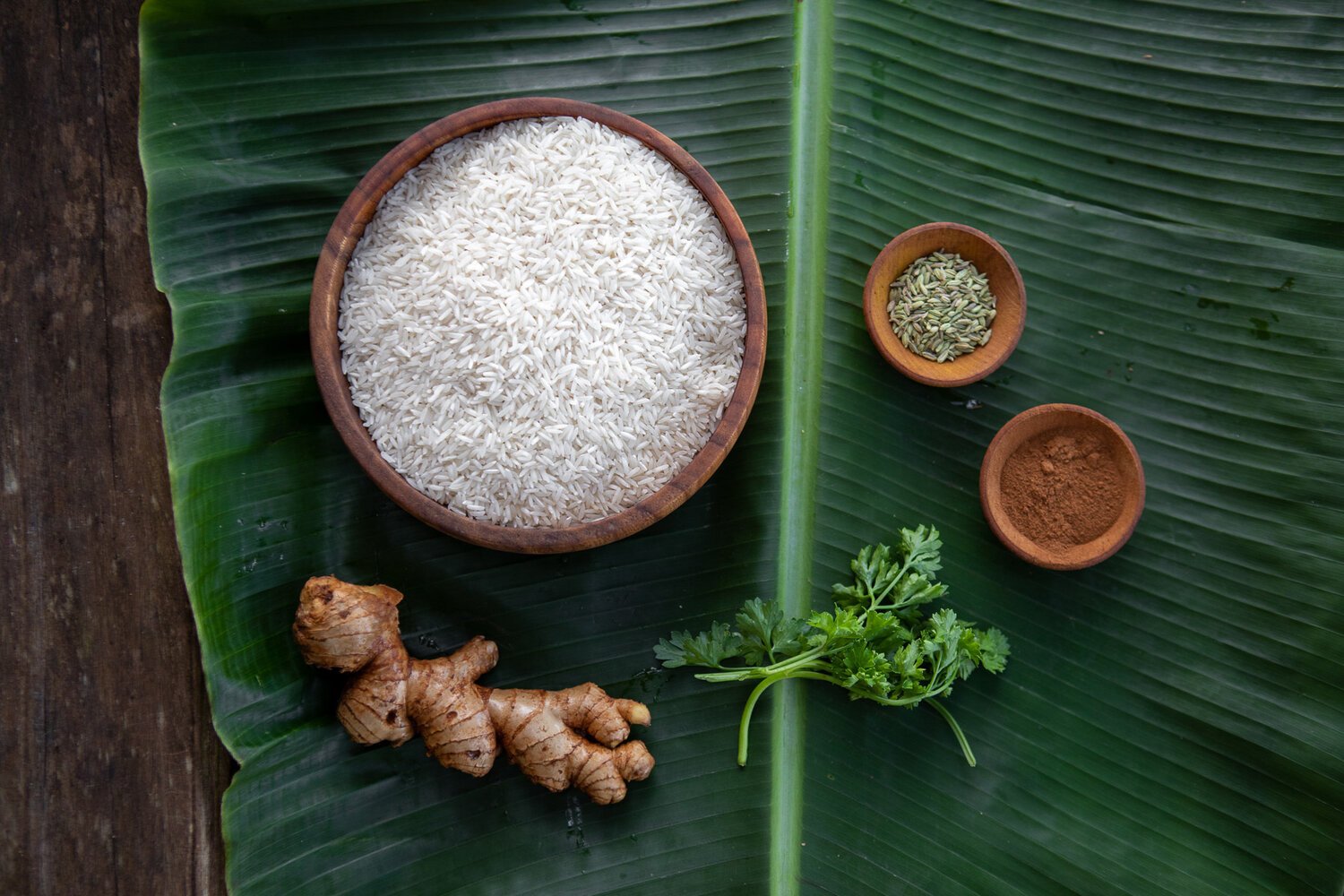
Can you modify kitchari?
WE ARE OFTEN ASKED IF IT’S POSSIBLE TO MAKE KITCHARI WITHOUT KEY INGREDIENTS LIKE GHEE, RICE OR MUNG BEANS.
The answer is, yes, you can make something similar but we wouldn’t call it kitchari. Instead, we’d consider it a stew made from a grain, legume, and combination of vegetables. Even if the stew includes basmati rice and split mung, it is not the classical simple kitchari.
What should I call the stew?
When you get creative and add new components to kitchari, call it an Ayurvedic One-Pot, which is a dish to enjoy when agni is reasonably balanced and symptoms are mild.
Why is it important to understand the difference between an Ayurvedic One-Pot and kitchari?
It’s because kitchari has a particular role in healing and recovery.
Kitchari is simple. It will always be rice and split mung with ghee, salt, turmeric, ginger. If there are any other spices, it may be just an additional one or two to support digestion and that is it.
Kitchari is a soupy porridge. It is the food which offers nourishment to the physical body without compromising digestion. Because of this, it is used in very specific circumstances.
Another way to look at it is understanding its inherent therapeutic value; it is comforting without being heavy, it is nourishing without being extractive, it is simple while being wholesome. Most importantly it allows the body to adjust and reset and recover, naturally.
It is most often recommended:
-
In times of recovery
-
During and or after illness
-
When one may be going through a highly stressful period
-
Postpartum
-
Post surgery
-
In times of fasting (one would rarely abstain from food but rather reduce complexity and volume)
-
Panchakarma
-
When the digestion is weakened or compromised
-
For the elderly or for young children when the digestion is weak, slow, or developing
The building blocks of kitchari
Rice, mung beans, spices, ghee, and water are the necessary ingredients to make kitchari.
Rice is crucial in kitchari because it keeps vata dosha in balance. Rice makes up the augmenting portion of a balanced meal, which means that it will calm and ground you, at the same time it builds and nourishes your tissues. Most importantly, rice cooked with moisture eases elimination because it forms the bulk of the stool in the colon.
Mung beans make up the extractive portion of a balanced meal. Extractive foods are cleansing in nature. They ask your body to give something up in order to digest them and are essential in breaking down healthy fats. In Ayurveda, split or whole mung beans are preferred because they are lighter than other legumes, easier to digest and nourishing. With their astringent and bitter taste, combined with the innate sweetness of rice, the two offer the simplest of the balanced bowl.
Ghee plays a fundamental role in keeping agni, the digestive fire awake and lubricated which also smoothes the process of digestion. Ghee is the only oil that is augmenting, meaning that it deeply nourishes all of the tissues of the body, including the joints and the reproductive organs.
The body actually absorbs and digests ghee more easily than any other oil. Reducing any excess strain associated with the process of digestion is highly beneficial for all doshas, especially vata. All of the scenarios listed above are the result of excess vata, therefore simple kitchari, with ghee and spices is most effective in the healing process.
-
Ghee is neither heating or cooling and thus does not provoke any of the three doshas.
-
Ghee supports agni whereas other oils challenge agni.
-
Ghee is great for the complexion, the eyes, the nose, intellect and memory.
If you’re looking to heal your digestion and move into a state of natural well-being, then it’s best to include all of these ingredients. The combination of these ingredients gives you all five elements from nature and the opportunity to bring balance to your body and mind.
Water also plays an important role in kitchari. More water makes for a soupy version that is more like gruel or rice water. This is best during times of illness recovery. The rice and mung will be almost dissolved, in contrast to a thicker porridge when less water is used.
Kitchari for illness recovery
When in recovery from illness, surgery, or trauma start with a simple rice gruel. Kitchari, you will see, is the last variation, yet knowing its origin gives this healing meal context. Listed below are the Sanskrit names and ratios for reference. The first three are a soupy gruel of rice porridge, a pinch of mineral salt would be the only addition. Mineral salt and introducing a small amount of fresh ginger and turmeric may be added to the final three.
Manda - 1 cup white basmati rice to 6 cups water
Peya - 1 cup white basmati rice to 4 cups water
Vilepi - 1 cup white basmati rice to 2 cups water
Odana - 1 cup white basmati rice, 1½ cups water
Yusha - ¾ cup white basmati rice, ¼ cup split mung beans to 2-4 cups water
Kitchari - ¾ cup white basmati rice, ¼-⅓ cup split mung beans to 6 cups water
Regardless of which variation you choose, make sure that the rice and mung are thoroughly cooked. For example, you may consider rice gruel, such as manda, when the immune system and digestion are most delicate, then slowly thicken it over time as the strength of agni and digestion increase.
A note on terminology: at Hale Pule we use the word kunyi to describe any of the first four recipes using white basmati rice. Kunyi is a colloquial term used in South India. You may also see it referred to as congee or kanji.
Visit our Ayurveda Lifestyle page for kitchen essentials
